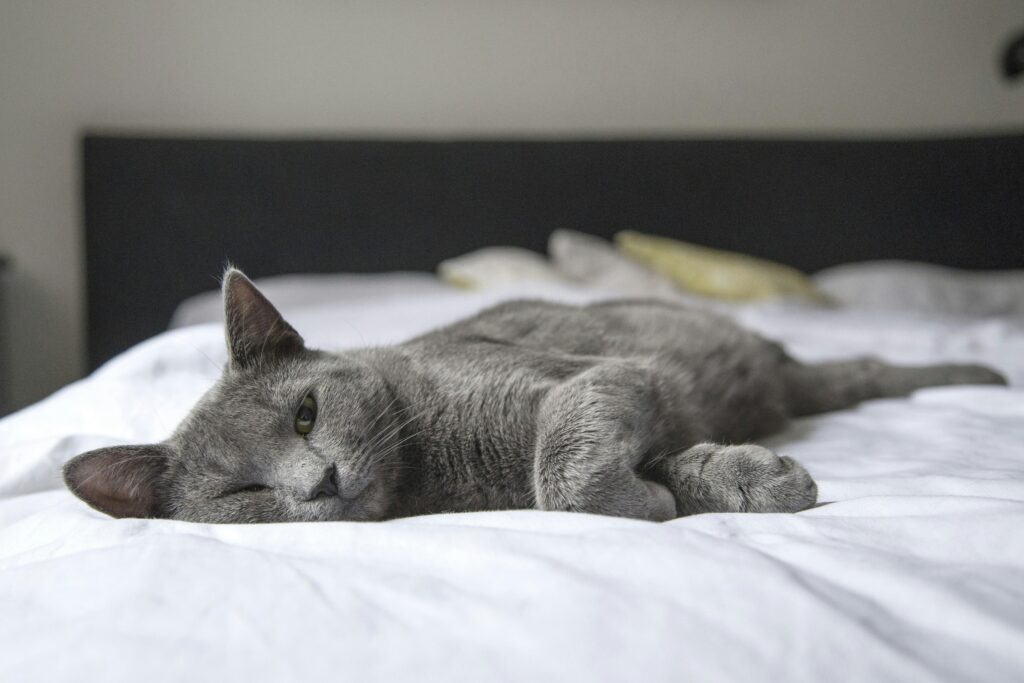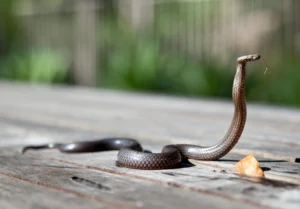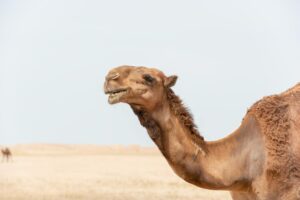Why cats and dogs will dive into insect-based pet food…
Eating insects might not be your thing, but your pet won’t notice a difference. By decarbonizing their bowl, their diet becomes less harmful to the planet.
For years, we’ve been told that we may soon have to start eating insects for our own good and for the planet’s sake. This shift is not easy given our moderate appetite for this type of protein, our culinary recipes, and our eating habits. The great protein revolution should therefore begin with our four-legged friends first, who are also significant polluters and pose a serious threat to the planet: 20% of the world’s meat and fish consumption is attributed to pet food. The carbon footprint of their diet is enormous, ranging from one to six tons of CO2 per year according to studies!
It’s hard to ignore the facts when considering that over half of the world’s population owns a pet and the number of cats continues to rise. In France, nearly 60% of French people reported owning a dog or cat in 2023 according to Ipsos, which is 13% more than in 2021. “Young people are increasingly urban, living in small apartments, having children later or not at all, and redirecting their affection towards a cat,” observes a market expert.

So how do we decarbonize our pet’s food bowl? Should we make them vegetarian? Or flexitarian, like us? Absolutely not! Veterinarians insist their digestive systems are adapted to animal proteins and nothing else. This poses a dilemma for the giants in the pet food industry – Nestlé, Mars, Unilever, among others – who have all committed to achieving carbon neutrality by 2050 but are not willing to overlook the lucrative pet food market.
“Alongside coffee, chocolate, and hygiene products, pet food is one of the fastest-growing segments in consumer goods, boasting the highest profit margins and displaying the most resilience during crises,” notes Antoine Hubert, co-founder of the industrial startup Ynsect. For nearly a decade, he has been advocating for an alternative solution to decarbonize pet bowls: insects.
Its specialty lies in mealworms, which are protein powerhouses (with over 70% protein content when powdered), blended with vegetables to meet all nutritional requirements for pet food. Founded in 2011, the company intensively farms mealworm larvae in its two factories in Dole (39) and Amiens (80). The larvae’s waste is transformed into organic fertilizer, and the larvae themselves into oil and flour. Meanwhile, Innovafeed, with its large-scale production unit near Amiens, and Agronutris with its plant in Rethel, Ardennes (08), focus on the black soldier fly.
These companies highlight their favorable environmental impact. According to Ynsect, its protein preparation for pet food emits 0.80 kg of CO2 per kg of ingredient, which is 14 times less than beef and 26 times less than lamb equivalents. Insect production also claims to be significantly less water-intensive. Currently, insect feed is primarily composed of agricultural by-products – a biomass in increasing demand. Worms and flies would readily consume unsold supermarket pizzas (with minimal meat content) if allowed by the European Commission – an effort actively pursued by the International Platform of Insects for Food and Feed (Ifipp) in Brussels.
Some fortunate animals already benefit from this virtuous diet. It’s conceivable that one day, such a diet could become the norm for our pets. “Fish feed based on insects is slowly gaining traction, and human consumption won’t exceed 5% by 2030, whereas insect-based pet food, authorized earlier, has reached commercial maturity,” explains Antoine Hubert. Ynsect initially entered this market by supplying niche brands distributed by veterinarians and online, such as Vibrac. Other brands like Tomojo or Ekinoe have also established credibility with insect-based kibble. “These small companies have proven themselves, and today we’re seeing significant acceleration: everyone is focused on insect-based pet food.” This includes major players like Mars and Nestlé, which together represent 80% of the market and have already launched products in the UK and Switzerland.

“They conducted commercial tests in a country, consumer tests with panels of dogs and cats to measure their preference for these products and the quality of digestion, and they are beginning to launch them.”
Now, the challenge remains in scaling up production. Currently, Europe produces 10,000 tons per year of insect-based flours for animal feed, with nearly 90% dedicated to cats and dogs. According to a Rabobank study, the sector could require 150,000 tons by 2030. “It’s an immense market that could reach over 13 billion euros in the coming years,” assures Christophe Derrien, Secretary General of Ipiff. Ynsect has made it their primary source of revenue: pet food made from mealworms (a species of beetle) accounts for 75% of their turnover. And this is just the beginning. “Everyone is waiting for volume. For next year, we’ve already sold our entire flour production and we’re negotiating with a major client for pâté,” details Antoine Hubert. “We’ve already signed $200 million in contracts for the next three years.” So, tomorrow, our cats might also start clucking like chickens…




